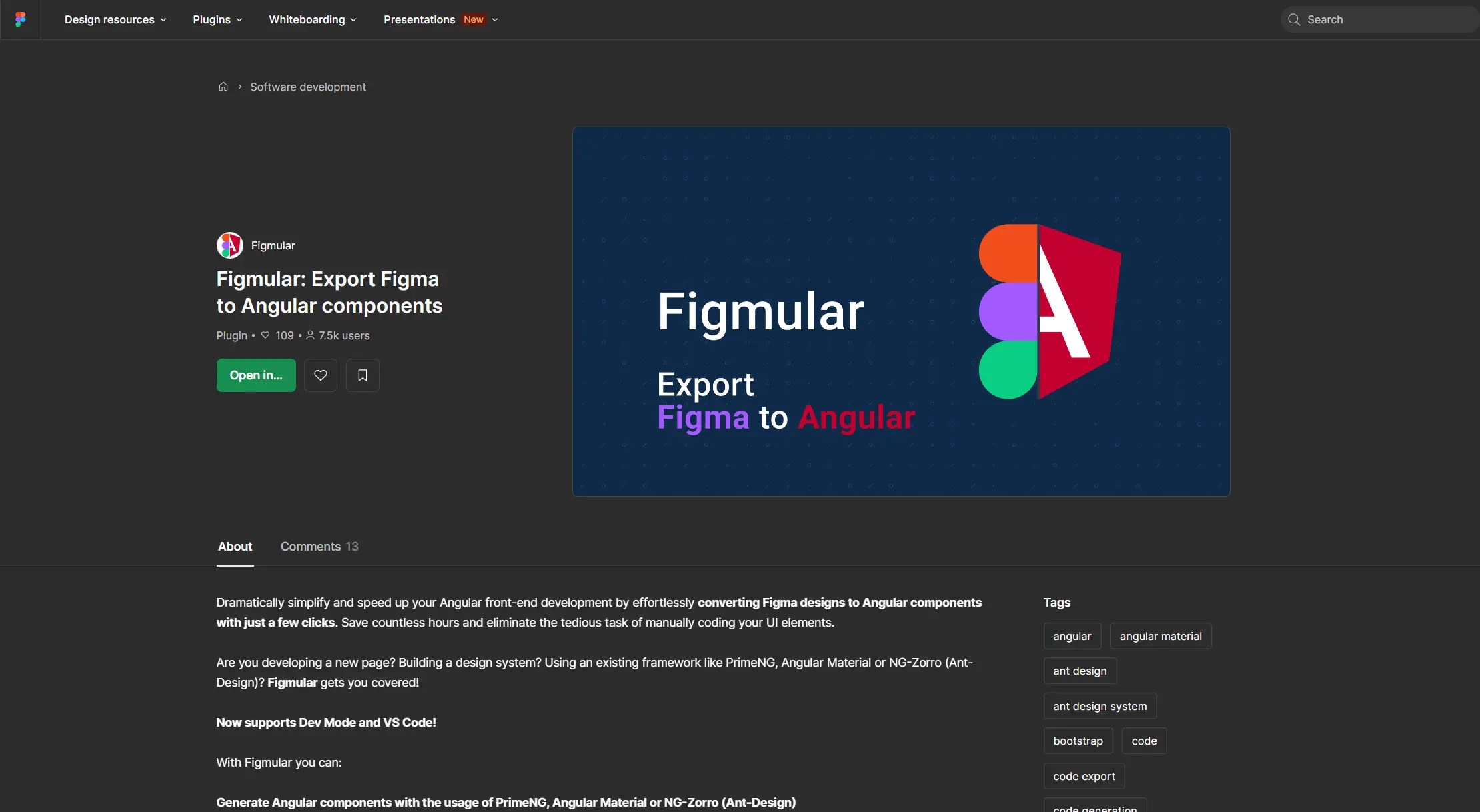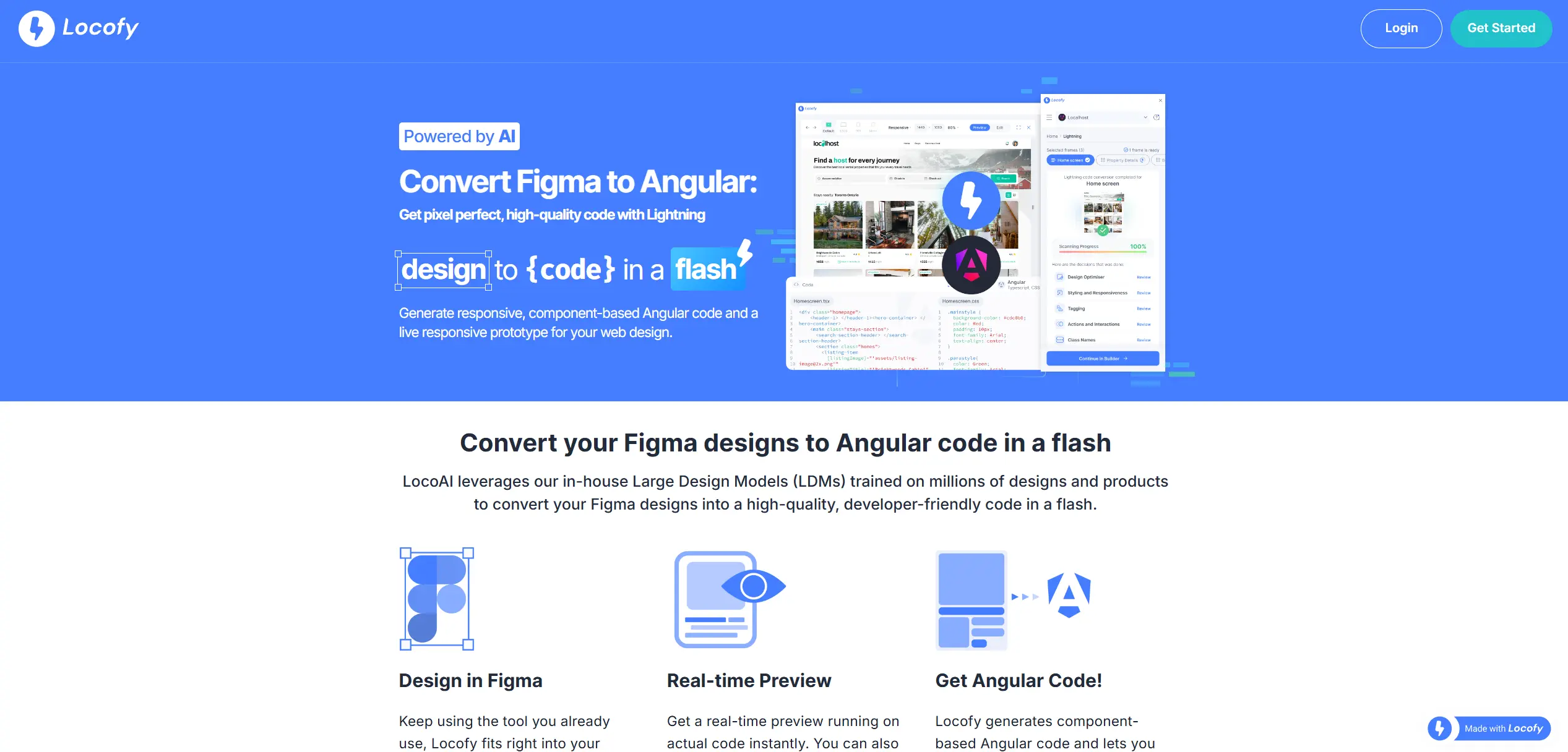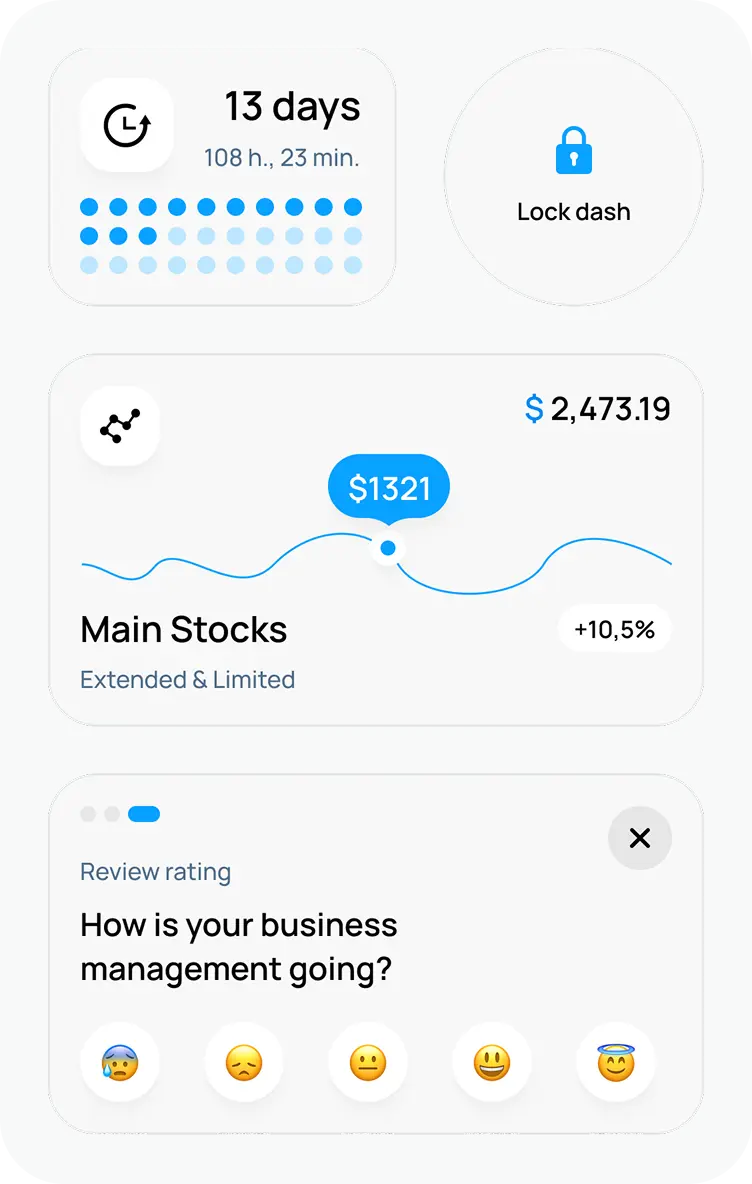Figma to Angular: 3 Best Methods to Convert Your Designs
November 13, 2024•4 min read

I hope you enjoy reading this post. If you want us to do your frontend development or design, click here.
Author: Alex Vasylenko | Founder of The Frontend Company


Since the release of ChatGPT, AI tools have become a must-have for any B2B and SaaS platform. Now, they even convert Figma designs to Angular code. But are they as good as they sound?
In this article, I will guide you through various ways to convert Figma to Angular and explore a few AI-driven tools and traditional coding approaches. We will look at the pros and cons of each, mainly for complex projects, so you can decide what’s best for your business.
Let's start with the three methods to convert Figma to Angular.
Method 1: Figmular

One of the fastest ways to convert Figma designs into Angular code is by using Figma plugins specifically designed for this purpose. One of them is Figmular, which aims to dramatically simplify and speed up converting Figma designs to Angular components with just a few clicks. You can generate code directly from your design elements with minimal manual intervention.
How It Works
Figma plugins like Figmular allow you to select individual elements or entire frames in your design and export them as code snippets for Angular. Here's a typical workflow:
Install the Figmular Plugin: Add Figmular to your Figma account from the Figmular website. Note that the plugins are only available in the Professional Figma Subscription Plan.
Prepare Your Designs: Make sure your Figma projects are well-organized with named layers and components.
Select Elements: Choose the components or screens you want to convert.
Configure Settings: Set your code output preferences, like styling options and component structures.
Export Code: Generate the Angular code and import it into your development project.
While Figmular can save time during development, the code it generates might not meet the quality standards required for complex applications. The lack of flexibility can hinder your ability to add custom functionalities or optimize performance.
Tools like Figmular can be useful when you deal with a simple project or need to create a quick prototype to visualize ideas. But this method might not be the best fit for scalability, maintainability, and top-notch code.
Not Sure If Auto-Generated Code Will Work for You?
Request a free project review, and we will give you the straight answer
Method 2: Use AI Exporters like Locofy to Convert Figma to Angular

Another way to convert Figma to Angular is by using AI-powered exporters like Locofy. Locofy Plugin integrates with Figma, so you can convert your designs right inside of Figma. You can also revise the decisions made by LocoAI to fine-tune the generated code to your needs.
The AI engine can understand design patterns, user interactions and generate more complex code than basic exporters.
How It Works?
LocoAI scans your design files and breaks the code into reusable components with props so you can generate code quickly. It automatically detects similarly styled elements to combine classes and reduce redundancies, giving you cleaner CSS code. Here is how to use Locofy:
Go to Locofy: Visit the Locofy website and sign up for an account. Note that some features may require a subscription.
Install the Locofy Plugin: Add the Locofy plugin to your Figma account from the Figma Community plugins library.
Prepare Your Designs: Make sure your Figma projects are well-organized with properly named layers and components to help the AI understand your designs correctly.
Select Elements: Choose the components or screens you want to convert.
Configure: Set your code output preferences, styling options, component structures, and Angular-specific settings.
Export Code: Use Locofy's AI to generate the Angular code and import it into your development project.
AI-powered tools like Locofy can save you time during initial development by converting Figma designs into Angular components. But the generated code will lack the depth and structure to support a scalable architecture.
In large applications, clean modular code is necessary for managing multiple connected components and future changes. AI-generated code won't meet these architectural standards and will result in code that is more rigid and harder to modify as the project grows.
Also, automated code generation tools like Locofy can introduce technical debt. As the code may not always follow best practices, developers may need extra time refactoring and optimizing it to make it conform to project standards. Over time, this will make maintenance more complicated and harder to track bugs or add new features without breaking something.

Transform your UI for peak performance!
🔹
Unlock seamless, high-performance frontend solutions tailored to your business.
🔹
Get an interface that outshines competitors and delights your users.
Method 3: Crafting Angular Code from Scratch Using Figma Designs
As a developer, I know how painful it can be to work with auto-generated Angular components in complex projects.
When dealing with generated code from tools like Figmular or Locofy, developers must review and edit it to ensure it aligns with Angular's best practices. In my opinion, this is the biggest disadvantage of these tools. Instead of saving time, they can disrupt the development workflow and make the code less cohesive.
Writing Angular code from scratch may be time-consuming, but it results in a much more efficient, maintainable, and performant application in the long run.
If you have a Figma design project you want to convert into Angular code, the best option is to work with an experienced team of Angular developers who specialize in this process. Skilled developers can take your Figma design, translate it correctly, and build a solid, scalable architecture from scratch — without the pitfalls of auto-generated code.
Also, when using AI exporters or converters in Figma, you often need to purchase multiple subscriptions with different plans. These beautifully wrapped tools may look attractive, but they do not achieve the customization depth and quality that complex projects require. Ultimately, you still need qualified developers to integrate and refine the generated code, which makes AI tools an additional expense instead of a true solution. Most developers would love to code from scratch and do their job without the pre-generated code that doesn't meet Angular standards.
💡 Note: If you know that your project needs the power and flexibility of Angular — the complex framework that is one of the hardest to learn — it's best to leave it to the professionals rather than relying on AI-assisted tools.
Conclusion
Using exporters or converters can be a shot in the leg in large projects with complex structures, as they come with serious limitations that can slow down your business growth.
Writing Angular code from scratch is a more traditional and default way, where devs take a Figma design and manually code it into Angular, creating each component separately. This professional approach is reliable and effective, eliminating the need to buy tools that do not contribute to the overall goal.
Auto-generated code can help with basic elements, but when you need to build a complex structure, those tools will only complicate and slow down the development process.
To avoid those pitfalls, you need a reliable partner with strong Angular expertise who can adapt to different situations. The Frontend Company is one of the best Angular migration service providers. Our team of experts builds user interfaces that meet clients' needs, exceed users' expectations, and stay ahead of industry trends.
💡 Contact us for a free consultation, where our manager will review your project and recommend the best possible way to convert Figma to Angular.

Unlock the full potential of your product

Boost customer retention & satisfaction

Become more competitive on the market

Move to the latest technologies stacks

Improve usability & visual appeal
FAQ

Alex Vasylenko is the founder of The Frontend Company, DBC and several other successful startups. A dynamic tech entrepreneur, he began his career as a frontend developer at Deloitte and Scandinavia's largest banking company. In 2023, Alex was honored as one of 'Top 10 Emerging Entrepreneurs' by USA Today.
RATE
Rate this article please
This will help us provide more useful information.
973 ratings, average 4.82 out of 5
